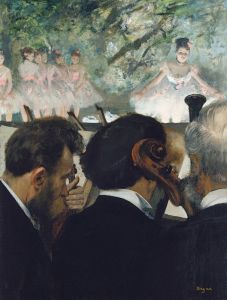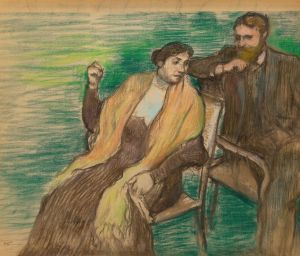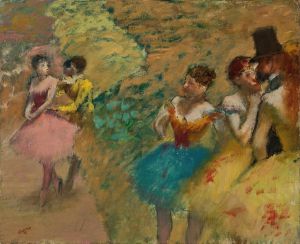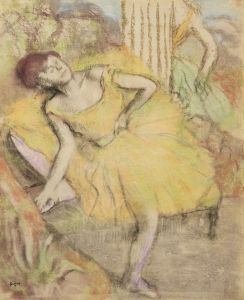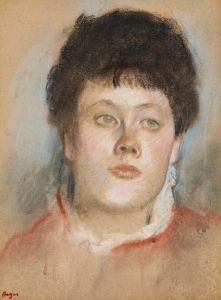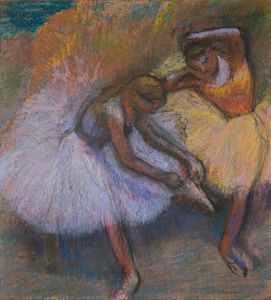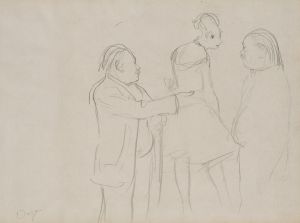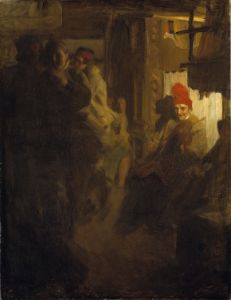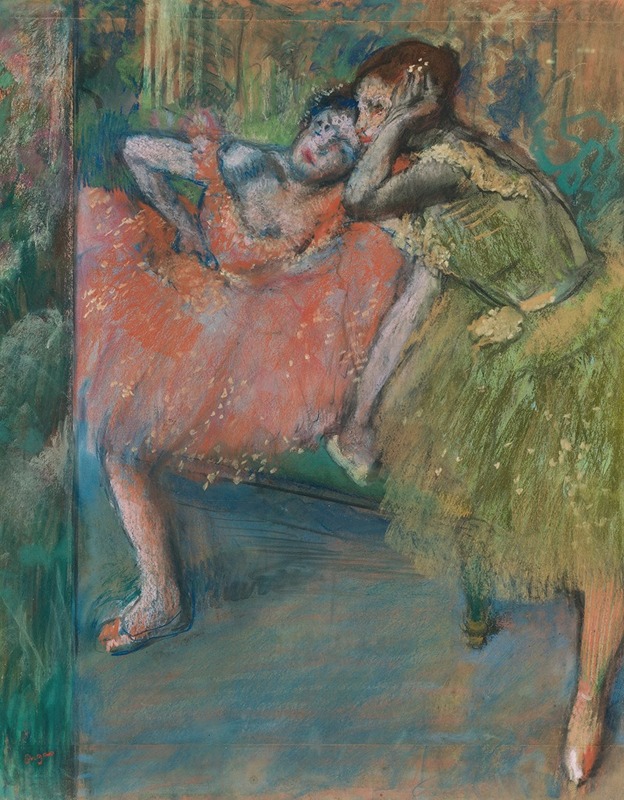
Danseuses Au Foyer
A hand-painted replica of Edgar Degas’s masterpiece Danseuses Au Foyer, meticulously crafted by professional artists to capture the true essence of the original. Each piece is created with museum-quality canvas and rare mineral pigments, carefully painted by experienced artists with delicate brushstrokes and rich, layered colors to perfectly recreate the texture of the original artwork. Unlike machine-printed reproductions, this hand-painted version brings the painting to life, infused with the artist’s emotions and skill in every stroke. Whether for personal collection or home decoration, it instantly elevates the artistic atmosphere of any space.
"Danseuses Au Foyer" (translated as "Dancers in the Rehearsal Room" or "Dancers at the Foyer") is a painting by the French artist Edgar Degas, renowned for his depictions of ballet dancers and scenes from the Parisian ballet world. Degas, a leading figure of the Impressionist movement, created numerous works that explored the lives of dancers, both on stage and behind the scenes, capturing their grace, discipline, and the often unseen labor behind their performances.
This particular painting, believed to have been completed in the late 19th century, portrays a group of ballet dancers in a rehearsal setting. The scene is set in a practice room or foyer, a common space where dancers would prepare, rehearse, or rest. Degas's composition is characterized by its dynamic arrangement of figures, with dancers depicted in various poses—some stretching, others resting, and a few engaged in conversation. The informal atmosphere contrasts with the polished performances typically associated with ballet, offering viewers a glimpse into the everyday routines of these performers.
Degas employed his signature techniques in this work, including a mastery of light, color, and movement. The painting demonstrates his interest in capturing fleeting moments and the interplay of natural and artificial light. The use of pastel, a medium Degas frequently favored, adds a softness and vibrancy to the scene, enhancing the textures of the dancers' costumes and the wooden floors of the rehearsal space.
The artist's fascination with ballet stemmed from his broader interest in modern life and the human figure. By the time Degas created "Danseuses Au Foyer," he had already established himself as a keen observer of contemporary Parisian culture. His works often focused on the behind-the-scenes aspects of the ballet, highlighting the physical demands and discipline required of the dancers, as well as the social dynamics of their world.
"Danseuses Au Foyer" is one of many works by Degas that depict dancers, a subject that occupied a significant portion of his artistic output. These works collectively provide a rich visual record of the Paris Opera Ballet during the late 19th century. While the exact details of this painting's creation and current location may vary depending on the specific version referenced—Degas often revisited similar themes and compositions—the piece remains a testament to his skill as an artist and his deep engagement with the world of dance.
Degas's works, including "Danseuses Au Foyer," continue to be celebrated for their innovative approach to composition, perspective, and subject matter, offering timeless insights into the artistry and humanity of ballet.






